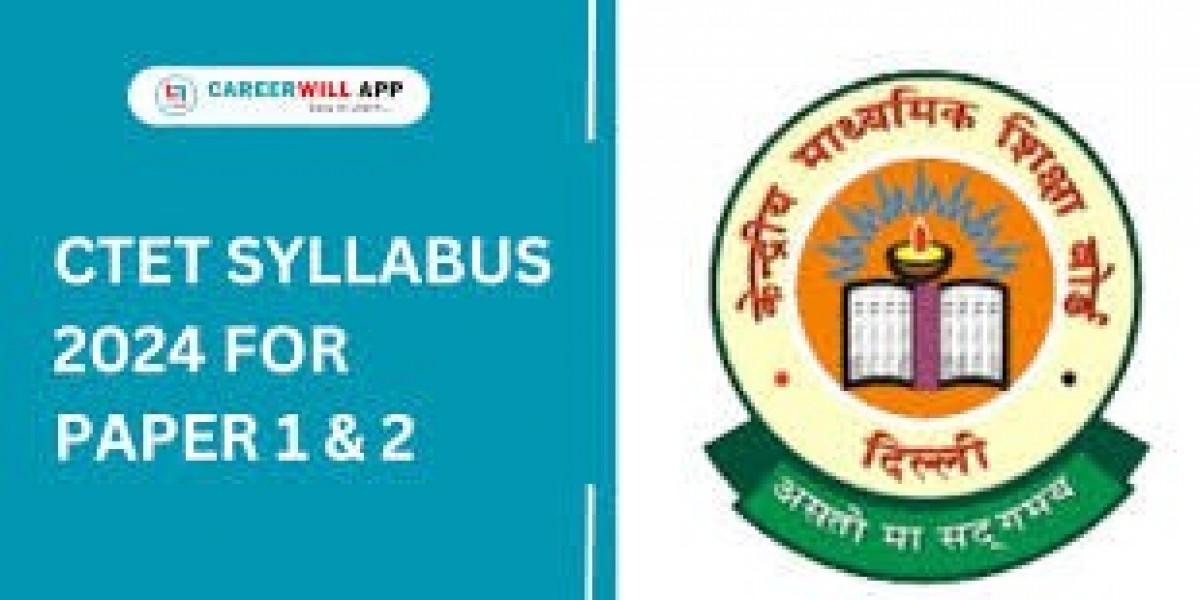Introduction:
The Central Teacher Eligibility Test (CTET) is a crucial examination for individuals aspiring to become teachers in India. Conducted by the Central Board of Secondary Education (CBSE), CTET ensures that only the most competent candidates are eligible to teach in schools across the country. The exam is divided into two papers: Paper 1 for classes I to V, and Paper 2 for classes VI to VIII. Understanding the CTET syllabus is the first step toward effective preparation and success. In this article, we provide a subject-wise and paper-wise breakdown of the ctet syllabus to help candidates plan their study strategy.
CTET Syllabus Overview:
The CTET exam consists of multiple-choice questions (MCQs), each carrying one mark with no negative marking. Here's how the syllabus is structured:
CTET Paper 1 (For Classes I to V) – Primary Stage
Child Development and Pedagogy (30 Marks)
Concept of development and its relationship with learning
Principles of child development
Influence of heredity and environment
Socialization processes
Theories of Piaget, Kohlberg, and Vygotsky
Concepts of inclusive education
Learning and pedagogy
Language I (30 Marks)
Language comprehension
Pedagogy of language development
Reading unseen passages
Grammar and verbal ability
Language II (30 Marks)
Comprehension
Pedagogy of language development
Language comparison and error correction
Communication skills
Mathematics (30 Marks)
Number system
Geometry
Shapes and spatial understanding
Measurement
Data handling
Pedagogical issues
Environmental Studies (30 Marks)
Family and friends
Food
Shelter
Water and travel
Environmental concerns
Pedagogical issues and teaching methods
CTET Paper 2 (For Classes VI to VIII) – Elementary Stage
Child Development and Pedagogy (30 Marks)
Development of adolescents
Learning theories and motivation
Teaching strategies for diverse learners
Inclusive education and classroom management
Language I (30 Marks)
Unseen passages (literary, narrative, scientific)
Pedagogy of language teaching
Language acquisition theories
Teaching learning materials
Language II (30 Marks)
Grammar and verbal reasoning
Language skills and pedagogy
Passage-based questions
Communication in classroom settings
Mathematics and Science (60 Marks) [For Math and Science Teachers]
Mathematics: Algebra, Geometry, Mensuration, Arithmetic
Science: Food, Materials, Natural Phenomena, The World of the Living
Pedagogical issues in both subjects
Social Studies/Social Science (60 Marks) [For Social Science Teachers]
History, Geography, Social and Political Life
Conceptual understanding and source-based questions
Projects, activities, and class discussions
Pedagogical concerns
Conclusion:
Cracking the CTET exam requires a deep understanding of the syllabus and smart preparation strategies. By breaking down the syllabus into manageable topics and focusing on child development principles and pedagogical approaches, candidates can improve their chances of success. Whether you are preparing for Paper 1 or Paper 2, consistency and practice are the keys to clearing this nationally recognized eligibility test. Start your preparation today with a thorough understanding of the CTET syllabus and pave the way for a rewarding teaching career.








